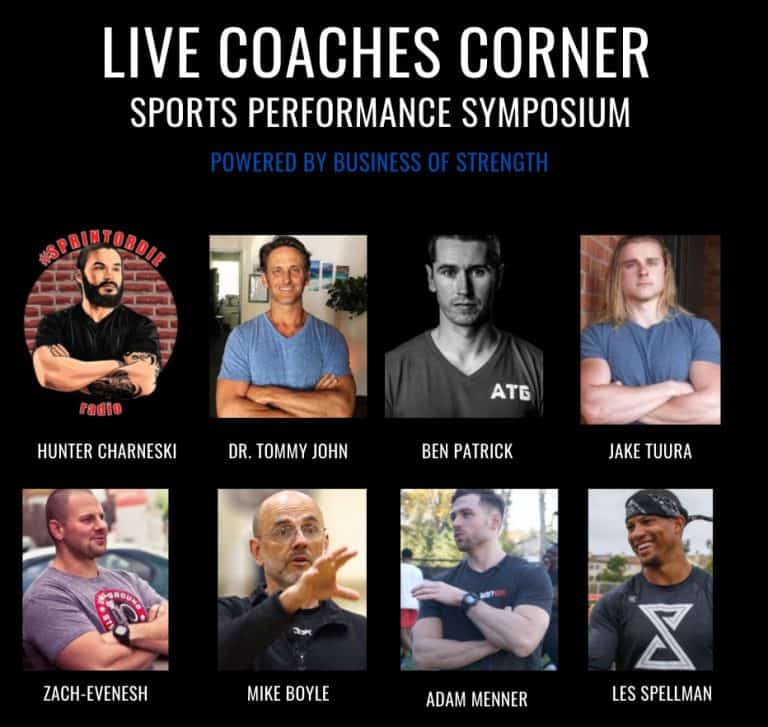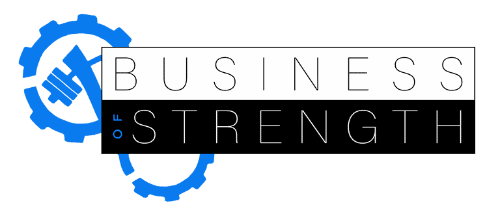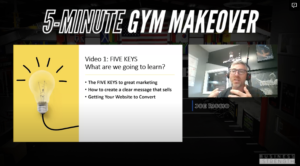The Performance Coach Career Blueprint
A comprehensive guide that will help you become a successful sports performance coach or trainer in the Private Sector Industry. Over 9,050 words of Learning, Experience, and Failure.










RSCC, Ms.
7 Steps to a Successful Career in Sport
Performance
Table of Contents
That Passion for helping others runs deep in your body, mind, and soul.
You were willing to complete those unpaid internships, work the long hours for free, and wake up everyday at 4am to help your clients reach their goals.
What About Your Goals?
You trust that, as long as you keep “over-delivering” and being a “team player” that you will reap the rewards down the road.
How long down the road?
3…5…10 years?
You may even work for an amazing company, but deep down you know, you can’t do this long-term.
You see them everywhere, you know,
The motivational videos by Les Brown, Gary V, and others that tell you to put your head down and “grind.”
You feel if you continue to make a difference in other’s lives and share your knowledge with others for free, that you will help thousands of people.
Unfortunately, reality has set in.
Now, you feel anxiety, helplessness, and self-doubt.
Can I really make this a career?
Can I create financial freedom for myself and my (future) family and live a life of fulfillment?
CHOOSING A CAREER PATH
There are a wide range of choices in the Sports Performance industry to choose from. You can work privately with locals trying to improve their fitness, work with a pro sports team, or even start your own business. The choice is yours but here is some information about the four different categories of Sports Performance jobs.
Lowest Barrier to Entry: High School
Strength and Conditioning Programs at the high school level are still on the rise. It varies a lot from school to school what your facilities will look like, what your salary may be and ultimately what the overall quality of the job is.
At the high school level, you can have a tremendous impact on the athletes. This will be most kids first exposure to weight-lifting and you can really set them up for success down the road with a quality program. Athlete participation can be challenging at time with other academic and extracurricular obligations as well as a lesser commitment to athletic success.
You will work with A LOT of athletes, but it is great place to get your hands dirty, try new things and build your skillset as a strength and conditioning coach.
Tier 2 Barrier to Entry: College Athletics
This is the classic Strength and Conditioning route. A strong percentage of colleges will pull right from their own pool of interns to fill lower level positions. Depending on the university’s commitment, there can be upwards of fifteen coaches on staff or as few as one. Typically, the more prominent the school’s athletic department, the more Strength and Conditioning Coaches are hired.
At the collegiate level, unless you work with Football or Men’s Basketball, you will likely be covering several sports. Some select universities will have a Strength Coach assigned to just one sport if that particular university is exceptional at it.
The beauty of collegiate Strength and Conditioning is that this is probably the place where your athletes have the most buy in. Sport coaches in college are more likely to favor a more disciplined and structured culture which lends itself well to the weight room. Fun, high energy workouts are common at this level.
High level Division-1 universities have world class training facilities. You can bring your dreams to life.
There are many universities whose athletic facilities are significantly fancier than those in the pros.
The downside of collegiate strength coaching is that six-figure salaries are hard to come Strength coaches for Football and Men’s Basketball can be as high as 600k but the drop off is tremendous when you leave those sports. However, those crazy salary figures don’t come without any conditions. Job security is not high in Men’s Basketball and Football and your security is almost always tied to the on-field performance of the team. It is common for a new head coach to bring his/her own staff into their new role which can leave the old staff back home sending out resumes.
On the flip side, there is a lot of room for progression through the school’s Strength and Conditioning Department as well as serving as a nice spring-board into professional sports. You can make a nice living strength coaching in college and many do.
I’ve been offered several jobs as an assistant strength and conditioning coach at D1 programs, but I decided to take another route.
The Cream of the Crop: Pro Sports
Making the pros is probably the most common goal of Strength and Conditioning Coaches. But before you sell your soul to work for your favorite sports team, there’s some things you should know.
First off, this is where athlete buy-in is lowest. You deal with multi-million dollar athletes who have a well-established routine and are often un-interested in changing the routine that made them rich and famous.
Job security is about as bad as it can be. Firings in professional sports are so commonplace that it has become very de-humanized. Fans call for the coach’s head when the team doesn’t perform well and the Strength Coach is not immune to that (Think about your favorite sports team.
Do you even know who their Strength Coach is? Do you care if they get fired? Most fans will answer no to both). Injury rates are heavily scrutinized by the front office and media and can cost you your job (ironically many professional athletes use their own private trainer, so if they get hurt, you could be fired for someone else’s problem).
The HARDEST TIER: The Private Sector
Working in the private setting is the biggest spectrum of them all. This could mean working as a part-time personal trainer at your local gym, working one-on-one with many clients, or opening your own Sport Performance facility.
I chose this realm specifically because I wanted to be in control of my own path. I will be the first to admit, this is the hardest route of all. This is because EVERYTHING rest on your shoulders. You business plan, your service, your marketing, client complaints, and so forth.
If you are working as an independent trainer or own your own facility, don’t make the mistake of not developing your skills as an entrepreneur.
Far too many coaches start their business with high hopes only to crash and burn due to a lack of a full grasp on the task at hand. Your success in this area will be significantly more predicated on your entrepreneurial skill set than your Strength and Conditioning skillset.
The barrier of entry is low here. You can find yourself in some big-name gyms with little to no experience. Now that is not to say that it’s all a bunch of newbies running around. There are a lot of great and experienced coaches working at these gyms, just not all of them.
It’s also worth noting that some gyms like Equinox and Crunch, heavily invest in trainer education which can be really helpful. There are also a lot of gyms out there that act as exercise and rehabilitation science hubs. They host tons of courses and are very demanding of their employees to keep pushing to learn more. This is a good thing. These are the gyms you want to be in. If you don’t, you may have picked the wrong industry.
ARTICLE NAVIGATION
STEP 1 ESTABLISHING YOUR WHY

Everyone loves the “thought of the Grind.”
I work hard (when I feel like it), I push myself to its limits (when the timing is right), and I make sacrifices (when I having nothing going on).
Sound familiar?
There’s nothing wrong with the aforementioned statements. Everyone operates at different capacities.
However, there is something wrong if you want to make a difference in the lives of others and your personal life.
You have to go above and beyond what most are doing to have what most want.
Now, this is not a pump up or motivational post, no. This is some real honest shit. The sacrifices you’re going to have to make to accomplish your goals will be hard to live with.
“Do I really need to do this now”?
“This can wait”
“I’m tired”
These are all of just the SMALLEST obstacles you will face on the pursuit of your Fitness Business Journey.
This is assuming you have discovered what you want your desired goal online business to look like, you have mapped out a detailed plan, and you have begun to create the framework for your online fitness business.
The hardest obstacle you will face is your “Why.”
You’re What? You’re WHY.
I can hear it now, “I already know my why – I want to make money online, I want to travel, I want to be.. dare I say…an entrepreneur?”
Those are aspirations – those are by-products of your WHY.
Your WHY is the inception of why you started in the first place, to keep you going when you don’t feel like it, and to keep you disciplined when you fail.
The #1 Tool for Your Success in the Fitness Industry will undoubtedly be your WHY.
The Inception of Why You Started
The fitness industry is a global market that has been one of the leading forces of revenue in the last 50 years.
Unfortunately, the barrier of entry is extremely low, like really low.
A Doctor? 8+ Years of Schooling.
A Teacher? 6+ Years of Schooling.
A Lawyer? 7+ Years of Schooling.
A Podiatrist? 7+ Years of Schooling.
A Fitness Trainer? A Weekend Certification.
This may be enticing at face value; yet, the long game is seldom for most “fitness professionals.”
There are many paths in the realm of fitness. Personal Trainer, Physical Therapist, Strength Coach, Train Athletes, and Train Adults. The list is almost infinite.
Very few true professionals make a real, long-lasting living in the industry.
You completed your “free” internships, you worked part time for a little, and now you have a decent or well paying job.
However, you’ve come to a fork in the road.
You either need to find a way to make more money or you need to streamline your services to allow yourself more time to do things you love.
You must remember your “WHY.”
Why are you doing this?
Is it because you truly want to help more people?
Do you want to spend more time with your significant other and family?
Do you want to prove others wrong and show you can build something for yourself?
This is your why.
The Momentum Catalyst When You Don’t Feel Like Moving
You’re ready. You know why you’re doing this.
It’s time to except you won’t feel like doing this.
I know I know, I keep contradicting myself.
It’s the truth! This is coming from someone who has been in your shoes.
Back to the fork conundrum, no matter your position you are going to face very challenging obstacles – even more so in the fitness industry.
We don’t have the luxury of the working a set amount of hours 9-5, 7-6, shift work, and such.
We work long, brutal hours, sometimes 7-14 days straight. This makes our free time even more valuable.
That’s the difference. It’s easy to create a side hustle when you have set hours and you know your schedule day in and day out (for the most part).
We have to be efficient. We have to know exactly what are main objectives are for each day. Every action must have a purpose.
When you don’t feel like doing it – you have to know that what you’re doing is still making a difference in your pursuit.
When your friends are out every weekend having a good time and letting you know about it – you’re still making a difference.
When your wife needs your help throughout the day so you wake up at 430am to get work done – you’re still making a difference.
When you’re tired after an 80+ hour week, but you spend your free time on the weekends to get more work done – you’re still making a difference.
To Keep You Disciplined When You Fail
You will fail.
There is no way around it. I don’t look at failure as defeat more as lessons.
If you choose to keep going did you really fail?
It is a part of the process. However, when you learn to love the process – you Become Unstoppable.
Most don’t love the process. They love the result. They love what they could have.
When you achieve your goal (you will), the journey doesn’t stop. You will incur new challenges, bigger issues, and more problems.
This is a never ending, unbelievably, life changing, financially rewarding road. Only few chose to drive down.
Your WHY will be there in the passenger seat the entire time guiding you along the way.
STEP 2 BECOME THE SMARTEST PERSON IN THE ROOM

Some people, usually because of their physiques or athletic achievements, are in demand before they take any of the traditional steps toward a career in the fitness industry.
You may be more knowledgeable than they are, but they seem to get clients thrown at them, simply because of how they look or what they have done.
Simple fix?
Separate yourself with your intelligence by dedicating yourself to continuing education.
If you truly want to make fitness a long-term career, you are going to have to dedicate yourself to becoming the smartest person in the room.
I mean this figuratively of course.
Seriously though!
Why should anyone listen to you if you don’t fit the aforementioned criteria’s?
That leads you to the question,
What Do I Need to Become a Personal Trainer or Sports Performance Coach?
Certifications
There are a whole lot of fitness certifications out there but the one you really want to zero in on here is the Certified Strength and Conditioning Coach (CSCS) from the National Strength and Conditioning Association (NSCA). This is the gold-standard of strength and conditioning certifications. No matter what job you hope to attain down the road, this certification will pass the test. Many of the other certifications (NASM, ACE, NCSF, ACSM, etc.) won’t be strong enough to get you in the door for a lot of jobs.
At VH Education, we recommend that everyone get their CSCS. It certainly is a more challenging cert to acquire but it is well worth it in the long run. The only higher-level certification that some professional teams require is the RSCC.
The Registered Strength and Conditioning Coach (RSCC) cert is just an extension of the CSCS but if you don’t have the CSCS, you will shut yourself out of being able to elevate to RSCC status thus eliminating your ability to work with some of those higher level sports team (In professional baseball, you cannot work above Double-A without the RSCC)
If you are dead set on working in a private setting, you can opt to go for a less challenging route, but you never know where your career may take you. With the CSCS, all of your doors remain open. As you go down the certification ladder, you start closing doors and you never want to do that.
For Starters, you will need a Personal Training Certification from an Accredited Organization. One of my favorite organizations and whom I have my personal training certification from is NASM.
If you are considering getting your certification from NASM, I have something that might help you out. I created a free 79 pages worth of notes that you can email me about.
It starts, but doesn’t end, with your personal training certification
Just about any potential employer will require a certification. But certifications alone don’t prepare trainers.
Even the ones that include a practical, hands-on component don’t offer any real guidance on the business side.
And those are the most legitimate, accredited certifications. Since they aren’t regulated in most places, anybody can start a company that certifies trainers.
Those non-accredited certifications are usually cheap and easy to get, making them attractive to people looking for shortcuts.
That’s just human nature.
Here are some of the places of I recommend you look into:
Top 5 Foundational Training Certifications
Joe Defranco’s CPPS (Certified Physical Preparation Specialist)
National Strength and Conditioning Association – Certified Strength and Conditioning Specialist
National Academy of Sports Medicine – Personal Training/Certified Performance Enhancement Specialist
PRI Postural Restoration Institute
My point: By all means, start your career with a baseline certification from a respected, accredited organization. But consider that your starting point. Knowing enough to get a job doesn’t mean you know enough to do the job.
Here is my solution to helping you continue your education in the Fitness Industry
The 70/20/10 Principle for Continuing Education
The 70-20-10 model is considered to be of greatest value as a general guideline for organizations seeking to maximize the effectiveness of their learning, and development programs through other activities and inputs. The model continues to be widely employed by organizations throughout the world.

70% Experience: Good vs. Bad Experience
Who you work for or intern for will ultimately dictate the QUALITY of experience you gain.
20% Interaction with Others:
Finding Others with More Experience in the Field
You want to surround yourself with other individuals who are smarter than you to obtain, learn, and ultimately apply new information.
10% Education: The Bases from Which All Your Ideologies Will Stem From
This will include all the readings, lectures, seminars, and certifications that you attend. Although this only makes 10% of your overall learning, it is the fundamental foundation for which everything else will be built upon.
Here is some insightful information that I found years back regarding how to strategically attack continuing education throughout your career from Eric Cressey.
5 Steps for Attacking Continuing Education in the Fitness Industry’
- Carve Out Time to Learn
- Always Have 3 Books Going on at a Time
- Attend to 3-4 Weekend Seminars a Year
- 1x a Week Read Journal Articles
- Join Community Groups with Other Mentors in the Industry
A simple bus extremely effective way to acquire more knowledge. I recommend when it comes to learning – you want to learn about things that pertinent to where you are right now. Think “what will help me get to the next step.”
Furthermore, here is how I would separate you’re learning:
Personal Development and Growth
7 Habits of Highly Successful People
How to Win Friends and Influence People
Extreme Ownership – Jocko Willink
Industry Related
Muscles: Testing and Functions with Posture and Pain
Diagnosis and Treatment Impairment Syndromes
High Performance Training for Sport
The High Performance Handbook – Eric Cressey
Fitness Business Related
The Little Black Book of Fitness Business
STEP 3 LEARN TO CONNECT WITH OTHERS

This is my networking notebook.
Some of you may be in there. I have a list based in tiers of people I connect with every single week. The tiers are based off of my relationship with them. My first question to myself every week is, “how can I help them?’
There are no mistakes. Everything is done purposefully. Relationships I have now, were all built on a systemic process.
I’ll show you everything here.
The Most Successful Trainers Have the Best Communication Skills
When you do engage, keep in mind that anyone you speak to, in or out of the gym, is a potential client. Or they know someone who’s a potential client.
You have two goals in a conversation with a person you’ve just met:
· Communicate what you do, and where you do it.
· Get them to like you.
It sounds basic and intuitive, but I assure you it’s not. In fact, as you’ll see, you need to develop a strategy for day-to-day conversations.
Consider the most common question you’ll hear when you meet someone outside the gym: “So. What do you do?”
If you say the first thing that comes to mind—“I’m, uh, I’m a personal trainer”—you’ve pretty much ended the conversation.
Sure, there’ll be some blabber for a minute to avoid an awkward silence. But you know the other person is plotting an escape.
You can do better.
Start by understanding the person only asked to be polite.
He wasn’t actually interested in what you do; it’s just the socially accepted way to begin a conversation when there’s nothing else to talk about.
But you can make him interested, and turn a polite question into an engaging and potentially productive conversation, by asking questions.
Consider this answer to his question: “I help people achieve their health and fitness goals.” (You’d come up with a variation that fits your personality and the situation.)
Follow it up with a question: “Take you, for example. What are your health and fitness goals?”
You’re now in the driver’s seat. You’ve given him a chance to talk about himself, but you’ve also created an opportunity to find out what he’s interested in. From there, just follow his lead.
If he says he loves running but doesn’t do as much as he’d like, ask why. If he describes an injury, ask what he’s done for rehab.
That gives you an opening to describe a runner you worked with who had a similar injury, and went on to complete a marathon or return to obstacle-course racing.
Now he’s genuinely interested in what you do, and wants to know more about how you’d help someone like him.
That’s the best-case scenario, of course. He might say he doesn’t have any goals, in which case you can offer your congratulations and find something else to talk about.
In any situation, your objective is to engage the person by being engaged—showing interest in what they do and how they do it, even if there’s no obvious benefit to you.
If nothing else, you get to practice being a good conversationalist, which is a crucial skill for fitness professionals.
Where Can I Get My First Job as a Personal Trainer?
This used to be a simple question for fitness professionals.
After completing your certification, the only option was to find a job at the local gym. You’d start on the floor, making minimum wage, and move up as you gained clients and built a reputation.
Things have changed. Today you have a variety of options
· Big box gym
· Private studio
· Group classes
· Online training
· In-home training
There’s no “best” choice. Your goal is to find the right fit for you right now.
Most new trainers are in one of two positions:
1. You already know the clientele you want to work with.
2. You have no idea.
If you don’t know, you’ll probably start the way trainers have traditionally started: at a commercial gym. It’s not anyone’s dream job, but it’s by no means a dead end.
Many of today’s most successful and best-known trainers started in commercial gyms. It’s a perfectly fine way to learn the business and figure out what you do best and want to do most.
Let’s say you want to work with young athletes, or, you want to work with elite players in one specific sport.
You can save a lot of steps by finding coaches and facilities that specialize in those populations, and getting in the door with an internship or shadowing a coach for a day or two.
I should add that even if you’re sure about these things now, your preference could change.
You may find you don’t like really like training young athletes, or you like the athletes but can’t stand the parents, or you’re fine with the kids and parents but you don’t like the hours, or the way the business works, or the repetition.
Whatever the reasons, there’s a good chance you’ll want to try something else at some point, and specializing too soon can limit your options down the road.
It’s hard to know which clients you’ll love training unless you train a lot of different types—younger and older; athletes and non athletes; novice and advanced; and those training for performance along with those training for fat loss.
One final bit of advice: Enjoying a sport or a specific type of training can be very different from coaching others for that sport or type of training.
You may find that your favorite clients are very different from you.
Getting a Job
I remember sitting at my parents’ house one night after one of my long internship days at DeFranco’s Training Systems. I had big dreams of working in the NBA but couldn’t even get a call-back from local gyms. It seemed like everyone wanted to hire someone with experience but how was I supposed to get experience in the first place if nobody was willing to hire a newbie.
The first thing you must do is decide where you want to end up.
In twenty years, what job do you want to have? What mountain are you climbing?
If you don’t know where you want to end up, you cannot possibly choose the right path to take.
DO NOT SKIP THIS STEP!
Take some time, sit in a quiet room and think about where you want to go. It’s ok to not know where you want to end up. Many coaches we work with here at VH Education don’t know, but it is critical to your career growth to figure it out.
Once you have a destination in mind, you can start planning your route. Any job you take, you want it to be a step in the right direction. You can even make a step-by-step plan of how you are going to elevate yourself to your dream job.
Now that your plan is in place, it’s time to be proactive in your search.
When I realized that I wanted to start my career, I e-mailed every single Strength and Conditioning Coach in the private sector industry.
Insiders Tip: Don’t ask for a job. Ask for advice on how to get a job.
You’re not going to get hired because you sent an e-mail. Asking for advice on how to break into the industry shows initiative, hunger and respect. Most coaches who are hiring, just want someone who is going to work hard, this is a great start to showing you are a candidate to fit that bill.
The point is, be proactive. Don’t send out resumes and hope for the best. That’s a one-way ticket to mediocrity and that’s not what brought you to this guide.
To Get a Strength and Conditioning Job:
Decide what your dream job is. Where do you want to end up in 20 years?
Create a step-by-step plan of each job you want/need along the road to your dream job.
Be pro-active in the job search. Be respectful. Be relentless.
Internships
Internships are the single greatest way to get started on the road to your dream job. The higher you want to climb, the more free work you will likely have to do. This is your time to put your head down, do ALL of the dirty work and grind it out.
Your internship should align with your career goals. If you want to be an NBA Strength Coach, you should seek out opportunities in basketball. Some NBA teams offer internship positions (these are obviously the best-case scenario) but there are also a lot of other great options that will push you in the same direction. Find out where current NBA Strength Coaches are coming from and see if you can intern in those places.
There are plenty of internship roles out there, you just want to make sure the one you choose, is beneficial to your long-term goals.
Once you secure the internship, it is your DUTY to do all of the dirty work. My recommendation is to go way above and beyond.
You are auditioning for a job. Hopefully the coaches you work for also have a strong network and can help you get to where you ultimately want to be. With that in mind, leave no doubt that you are the most amazing up and coming Strength Coach this industry has ever seen. Be the first one in and the last one to leave. Any time you can help the coaches out and make their life easier, do it.
Your goal is to make them hate the final day of your internship because when you leave, their jobs will be so much harder. I cannot tell you how many people get incredible jobs because they were outstanding interns. Do not screw this one up.
We have one of the most comprehensive internship programs in the country. We pride ourselves on giving our interns the most hands on, knowledgeable, in the trenches experiences.
How do I Land My First Personal Training Clients?
Two words: Look. Busy.
Perception quickly becomes reality. If you create the perception that you’re in demand, you soon will be. After all, if you’re not in demand, why would anybody want to train with you?
Here are a few ways to look busy, even when you aren’t:
First, fill your schedule, at least partially, with fictitious appointments. You don’t need to go full fabulist by using fake names. Just block off some hours with a color. Keep your phone or tablet with you at all times, with the calendar app open. When you speak to a potential client, let them see your partially filled schedule.
Second, when it’s time to book an appointment with a prospective client, offer two times. Never say, “What time works for you?” For one thing, it puts the onus on the client to find a time.
Second, it implies you’ve got nearly unlimited openings, which is the opposite of what you’re trying to project.
Another trick that worked for me: When you’re on the floor, wearing your uniform, give the impression that you’re working with somebody.
Sometimes I would invite friends to come to the gym for free training sessions. Other times I would ask members if they want to try out some new exercises or stretches I’d just learned.
Busy begets busy. Never let people see you standing around with nothing to do. Always find someone to engage with.
STEP 4 IDENTIFY YOUR (POTENTIAL) EXPERTISE

We hear all the time how important it is to “follow our passion.”
This is great and is true to an extent. I would much rather be doing something I love everyday making less money than HATE my job making better money.
This notion provokes the question, why can’t you have both?
The singular, most important advice I have ever received was;
“Don’t follow your passion – follow what you’re good at, consequentially – you will begin to BECOME passionate about it.”
Lets break this down before you begin to send me hate mail.
We have identified that you love fitness, sports, and training in some capacity. Couple this with your love of helping people. Great.
I want to break how to identify two things that will dramatically change the way you think about your career and will expedite the process from getting to where you want to be.
Concept 1: Identify Your (Potential) Expertise
As announced in this step obviously, I want to deep dive into what this actually means.
In the process of building your career it is advised that you become a good generalist before narrowing your scope of practice. This can be anywhere between 1 and 5 years or more.
I call this “testing the waters.” You want to get a feel for things you love and things you can absolutely do without.
How do you know what you want to do if you haven’t exposed yourself to a variety of different fitness realms, environments, and training ideologies?
Overtime you will begin to naturally gravitate towards something you enjoy. You will begin to spend a majority of your working and free time to learning more about this particular field or niche.
Do you like working with athletes or adults?
Do you like a more corporate or private sector setting?
Do you like strength training, Olympic weighting, and training like an athlete?
Do you like physical therapy, movement, FMS, and PRI?
Do you like to work with big or small groups?
Do you want to work with a particular sport?
Do you want to work with a certain demographic or population of people?
The list will go on and on. You have to experience a little of everything and understand the fundamentals of training ideology, practices, and human anatomy before you get “specific.”
I love training athletes, specifically basketball players. Yes, all athletes should train the same – to a degree.
However, I started off by learning about human anatomy and physiology. I progressed to learning about training principles and ideologies from multiple resources.
As time progressed, I narrowed my scope to speed, power, and performance for basketball players.
This leads me to me second concept.
Concept 2: Do What Your Good At, NOT What You Love
Now that you have established your niche (or at least the wheels are spinning), it’s time to do some self-evaluating.
This can be a daunting task for some.
Nobody likes to admit what they are bad at.
In 2019, this can be extremely hard. You are fed information about how to become an entrepreneur, how to brand, you need to make videos everyday, start a podcast etc.
It’s hard NOT to get distracted.
Here is what I suggest:
Grab a white piece of paper and create 4 quadrants.
Within each Quadrant, be as specific as possible; detailed direct things that fall under each category.
Q1: What You Love:
- What areas of fitness, sports, training, writing, making videos, speaking
Q2: What Your Good At:
- Writing, technology, making videos, speaking, coaching, leadership
Q3: What Your Bad At: (Be Honest)
- Technology, organizational skills, making videos, writing, public speaking etc.
Q4: Your (Potential) Expertise:
- Based on the aforementioned questions: training athletes, adults etc.
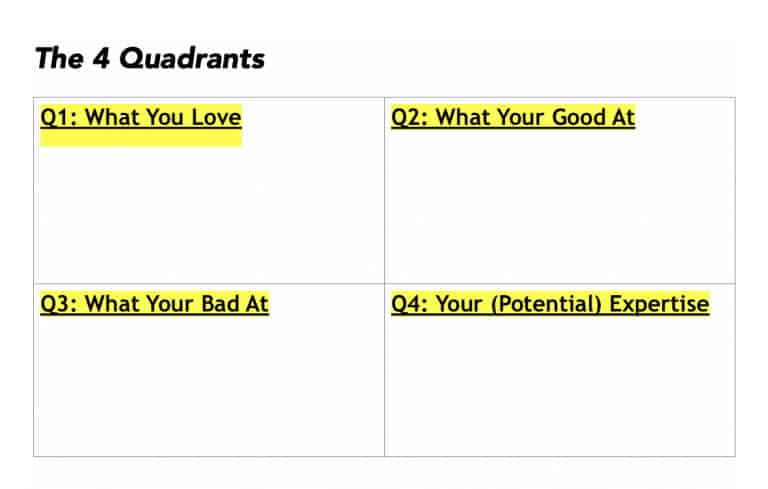
Now that you have filled out the 4 quadrants let’s break this down further.
Step 1: Identify
- What 3 things from each category are you immediately drawn to?
- Circle these 3 items
Step 2: Eliminate
- What remaining items could you completely do without?
- You are going to X these remaining outs, leaving you with 12 items (3 an each).
Step 3: Specify
- Q1: Out of these 3 items – what do you “Love” the most? Circle 1
- Q2: Out of these 3 items – what are you the “Best” at? Circle 1
- Q3: Out of these 3 items – what are you the “Worst” at? Circle 1
- Q4: Out of these 3 items – what could you ‘Do Without”? Eliminate 2
Step 4: Realize
Now, let’s put it all together.
You have identified what you love. Awesome, now let’s combine it with what you’re good at.
Do away with what you’re the “worst” at.
Put it all together to find your expertise.
Is this perfect? No.
Will it change overtime? Possibly.
I want you to stop contemplating and take action. If you have no direction you are tube floating down a river with no paddle.
Use this in some form to help identify your strengths and weaknesses. This will set you in the right direction.
STEP 5 DEVELOP HIGH INCOME SKILLS

We live in a very narcissistic time in history. Everyone is infatuated with themselves, how they are perceived by others, and how important they are to society.
What kind of car do you drive, how much money do you make, where did you go to school, or what is your “job title”?
These are all external materialistic things that we associate our value with to impress those around us.
We work so hard to be able to “earn the right” to have that job title you want, to drive the car that screams you have money, and to KILL yourself to earn that degree from that well respected collegiate institution.
Are wanting these things wrong?
Of course not.
However, when you associate your value with these things you begin to lose sight of the bigger picture; YOUR FUTURE.
“But Adam, isn’t working hard to get those things taking control of my future?”
Not really.
You see, we have it all backwards. We are focused on labels, items, and titles.
NOT skills.
Labels put you into a preconceived class. Sure, you might be good at what you do but here’s the kicker; you’re replaceable.
There are millions of people that are working extremely hard to earn positions similar to yours. Not everyone may have graduated with the degree you have, or the amount of money that you make.
However, you need to separate yourself from the common clan.
In order to create the future you want, regardless of the industry, you have to develop a HIGH LEVEL of SKILL that will make you irreplaceable.
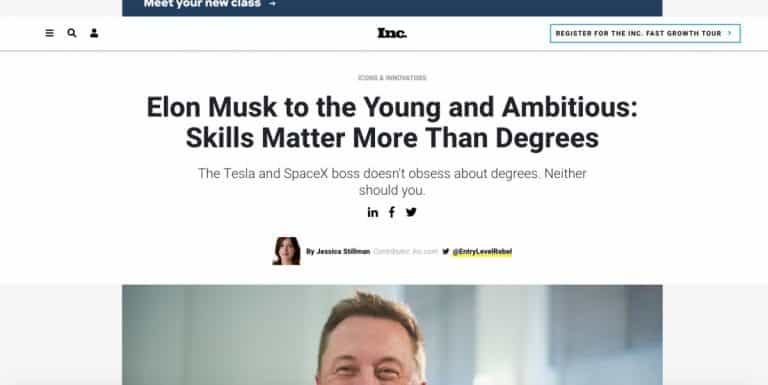
Take Elon Musk for example,
Degrees matter – only when they have specific objectives attached to them. Such as a doctor, lawyer, or teacher.
If you have The Fitness Entrepreneurial Spirit, you are going to have to think bigger.
Anybody can run a great training session.
Anybody can program a block of training for an athlete.
Anybody can help someone get into great shape.
Can anyone learn how to make high quality videos, write exceptional content, or connect with other individuals? No.
Skill are the separating factor.
In the 2019 Fitness age, skills are even more valuable.
The volume of UNDER-qualified trainers is higher than ever. People who look good posting pictures, labeling themselves as creators, and then having you buy their programs.
Must be nice, right?
I don’t think so.
That’s not a SUSTAINABLE career path.
A career founded on high income skills such as public speaking, networking, writing well, producing high quality video content, and creating interpersonal relationships will ALWAYS stand the test of time.
You will be able to adapt to new circumstances because you understand the process of learning new skills.
Making yourself irreplaceable, not valuable.
STEP 6 ESTABLISH YOUR BRAND, CULTURE, & SERVICE
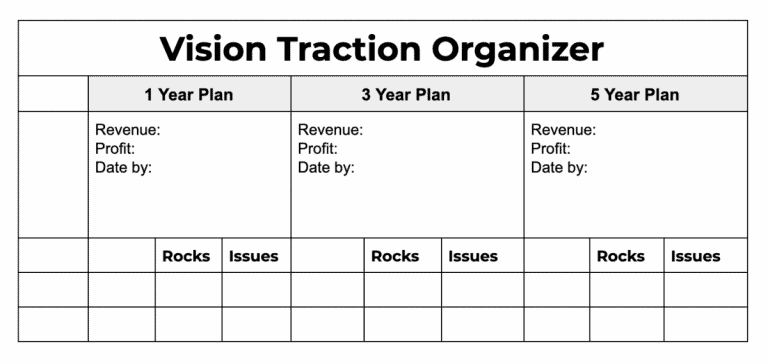
Your Personal Brand is like currency.
Contrary to popular belief, a Brand is much more than a NIKE Logo.
The way you carry yourself, how you address others, the colors you use, your logo, and most importantly, how people identify with you – are all characteristics of your brand.
Everything that you say, every action you take, and ever decision you make is a direct reflection of what your personal brand is about.
Underneath your personal brand, you have your culture and service. These are the two key pillars for standing the test of time.
Anyone can act like they have an amazing brand in the “social media world.” However, this makes up an extremely small portion of what it truly means to have a brand.
In step 6, I want to breakdown each pillar (Brand, Culture, and Service) and how it applies to creating a long-term career in the private sector fitness industry.
Pillar 1: Your Personal Brand
Below, are the 9 Successful Key Components of a Personal Brand. I believe this provide a concrete way of establishing who you are and what your brand is about.
1. Brand for a Competitive Advantage
“Jobs will come and go, but your personal brand is forever.”
Branding helps you develop a strong persona and gives you a competitive advantage in a crowded marketplace.
In 2019, everyone has a personal brand. However, you want to narrow in on your niche.
2. Explain How Your Past Fits Into Your Present
None of us will end up where we began. Over time, your career and interests may go down many paths. Part of defining yourself is explaining your evolution by developing your narrative.
Your branding narrative is a brief statement that explains your overall progression in your career, interests and life. The key is to focus on how your prior experience brings value to who you are now.
3. Create a Signature Style
Another way to quite literally stand out from the crowd is to develop a signature style.
In the 2019 Fitness Industry, everyone has a certain style that is presented through artwork, colors, fonts, and imagery that is presented across ALL Social Media Platforms.
4. Leave an Impression with an “Elevator Pitch.”
As Jeff Bezos, founder and CEO of Amazon, once famously said, “Your brand is what people say about you when you are not in the room.”
The goal with any personal brand is to leave a strong first impression, and one of the best ways you can do that is during a face-to-face meeting.
When networking in person, one simple way to create a great first impression is to develop a compelling elevator pitch. Which is a brief verbal statement that conveys who you are.
7 Elevator Pitch Mistakes To Avoid
So now that you know what to do in your elevator pitch, let’s quickly talk about what NOT to do.
1. Speaking too fast
Yes, you only have about 60 seconds, but try to avoid cramming 15 minutes of information into one minute.
2. Using highly technical terms, acronyms or slang
You want your pitch to be easily understood by any audience and that means try to avoid using words that will confuse the average person. The last thing you want is for whoever is listening to you to feel dumb. Remember, think commercial!
3. Not being focused
This isn’t a general conversation and you’re not discussing the weather (unless that’s your job, in which case, never mind). Keep your pitch clear and focused.
4. Not practicing what you’re going to say
First, write down your pitch. Read it over. Have your friends and family read it. Does it make sense? Make sure it flows well and that there aren’t any spots that feel rough or awkward. Then practice it. Practice it again. Keep practicing it until it becomes so easy for you to pitch that you can do it at the drop of a hat.
5. Being robotic
This is all about a face-to-face interaction with someone you want to impress. Having an easy, approachable, conversational style to your pitch will get you much further than an overly rehearsed monologue approach.
6. Not having a business card or other take-away with you
Okay, you’ve sold them on you…now how are they going to get a hold of you when they decide it’s time to bring you in? Make sure you always have something on you to pass on that will allow people to not only remember you, but contact you later on.
7. Not saying anything
It does absolutely nothing for you to have a killer elevator pitch if you never use it. Now it’s your turn! Here are three example elevator pitches to get you started.
Remember, these are just examples! Make sure you do the work to craft one specific to you and your audience!
5. Own Your Name Online
Do you need a website? No.
Is it helpful? Yes.
However, most people don’t fully understand how to the real logistics behind running an online business. It is MUCH more than gaining a following and selling a $50 program.
I teach everything step by step how to create a profitable online business here.
“Your Brand is not how you see yourself, it’s how others perceive you”
There are 7 Platforms I believe You Should Have BUT Don’t Need.
- YouTube
- Website
Everything distributed amongst all platforms must be the same in imagery, artwork, fonts, and colors.
The more you are “omnipresent” the more people will associate with your brand.
However, I suggest you pick 2 platforms two MASTER before you venture into all 7 Social Media Platforms.
6. The Power of Word of Mouth
When you consider how to market yourself, don’t forget the power of word of mouth, which is one of the best ways to get people to remember you.
One of the most POWERFUL things you can do to help catapult your brand is (drum roll)…
Do things for FREE.
7. Net Works with Mentors
Collaborating with others in your particular niche is often, not always,
“the golden ticket.”
If you are constantly around, sharing, and promoting others who’s values, goals, and business align with yours – people are naturally going to support you by association.
Think about 5 people in your niche within the fitness industry.
Now think about 1-3 people who you associate with them.
This is not to say you will instantly collaborate with them by sharing what they do.
However if you do the following:
- Message them how well their content has helped you
- Comment on All of their social media
- Share their content/tag them
- Provide them with business
They will instantly begin to know your name. As you continue on with your career, you begin to apply the 7th Branding Tactic: “Word of Mouth” and now you have established a real relationship.
8. OVER DELIVER
Never stop providing value.
Pillar 2 Establish Your Culture
All right, so we’ve established your brand. Great job!
Now its time to take things a little further and deep dive into what defines your culture and your brand.
Your brand and culture work synonymously with one another.
I believe there are three components to establishing a successful culture.
Part 1: establishing your core values
Part 2: establishing your vision
Part 3: establishing Your intangibles
Part 4:establishing your core values
You are going to live and die by your core values. It will be the basis for all decisions you make.
How you act
Who you work with
Who you choose to spend time with
Who you choose to do business with
How you want to treat your clients
How you carry yourself on a daily basis
The summation of the answers to the above questions will ultimately be the lifeblood of your culture and brand.
I want to break down how to create your core values and apply them to your daily life as a young coach and Fitreprenuer.
What Key Characteristics or Slogan Do You Want to Be known For?
For example, here at Varsity House Education our core values are
Performance:
Dedicated to helping you coaches perform at a high level to create impact in change in others.
Coaching:
Dedicated to world-class coaching and teaching of young coaches and athletes to help them reach their ultimate potential.
Culture:
Dedicated to creating a culture of young coaches and athletes who all share one common goal: self-improvement.
These core values will be associated with your brand name. They will be seen on every piece of content you produce, on your website, on your social media, and most importantly, seen in you.
Part 2: Establishing Your Vision
Creating the perfect vision statement may seem like an overwhelming task, but it doesn’t have to be. You don’t have to reinvent the wheel to develop a powerful vision statement.
A personal vision statement is the first step in creating the blueprint for your career. It is easy to get lost in the day-to-day session grind. Take a step back, and look at yourself from a 30,000-foot view.
- What do I want to be known for?
- What do I want to hang my hat on?
- What career do I want for myself?
- Where do I see myself in 1, 3, and 5 Years?

STEP 7 GET IN THE TRENCHES
“To learn and not to do is really not to learn. To know and not to do is really not to know.”
Stephen Covey, Author of 7 Habits of Highly Successful People
Reading is great. It is one of the pillars of learning and continuing education. Reading allows you to objectively obtain information and formalize your own thoughts, understandings, and ideologies that are imperative for personal growth and development.
Application can be the great antagonist to reading and learning, if misused.
If you are not applying what you learn daily, you are not really learning. It is through consistent reading, learning, application, and failure that you will begin to master your craft.
Application is the great equalizer. Those who apply daily are likely to accelerate their career, whereas, those who hold onto their knowledge are more likely to remain the same – despite all the new information they acquire.
Now that you have established
- Why you’re going to become a professional in the industry
- Who you want to learn from
- Who you want to connect with
- Who You are and Your Vision
- Your Brand and Culture
- What you are the Best at it
It’s time to get to WORK!
Time in the trenches is where you build career equity.
Yes, the same equity you would have in your home – you should invest in the number one asset you have, YOU!
By paying your dues early, making mistakes often, and building your professional person you’re investing in your future.
You are adding tools to the toolbox, developing skills, creating a voice, and more important doing the work that will pave the way for years to come.
Entrepreneurship
One day, I’m going to write a book on building a business and it will all be based on the next several paragraphs.
When I first started my business, I made a lift of over 500 well known coaches in the industry. I made another list of 500 local coaches in the industry.
All over the world, Strength and Conditioning Coaches, buck the system in favor of their dreams of being their own boss and cashing in on some bigger paychecks.
I believe there are four qualities you need in order to succeed as an entrepreneur.
First, you have to have the talent. You must be able to make the right decisions. You can work as hard as you want but if you aren’t good at it, it won’t matter.
Secondly, you have to be able to go against the grain. I have always been a different kind of dude. I find great joy in being different. So, it was easy for me to not follow the crowd and build a company from scratch in the face of MANY people telling me not to and literally laughing in my face. This is not as easy for most.
Third, you must be able to weather the storms. Entrepreneurship is not for the faint of heart. I’ve spent over $21,000 dollars on business development and failure.
I also believe in what I call “The Entrepreneur’s Trap.” In your mind right now, you probably have an idea of what a business should look like, feel like and sound like. Chances are, you’re wrong.
Successful companies sound a lot different than the amateur companies. The key is to provide 10x more value than anyone else. Not to offer the best discount codes.
When I look around at other entrepreneurial efforts, I feel like everyone else is playing checkers and I’m playing chess. Nobody is even playing the same game. Just because you created a product and tell people about it on Instagram does not mean that you are running a business. You would be stunned by the analytics, infrastructure and intent behind everything that I do.
You should see it for yourself.
Winning in the industry is 50x as hard as you think it is. However hard you think you’re working, you need to multiply it by 10. I get it, I understand, you might not know what that looks like. That’s why I created VH Education.
When you’re ready to take ownership of your career, I’ll be ready to serve you.
TAKE OWNERSHIP OF YOUR CAREER
